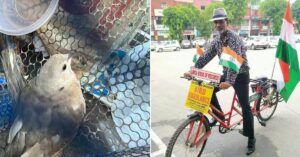TBI Blogs: These 16 Amazing Animal Rescue Stories from India Will Restore Your Faith in Humanity!
Wildlife SOS engages in conservation efforts leading to protecting and rescuing orphaned, injured, and displaced wildlife found in urban and rural environments across India. The organisation’s Rapid Response Unit has saved the lives of various wild animals that have been trapped, injured, or caught in such conflict situations.
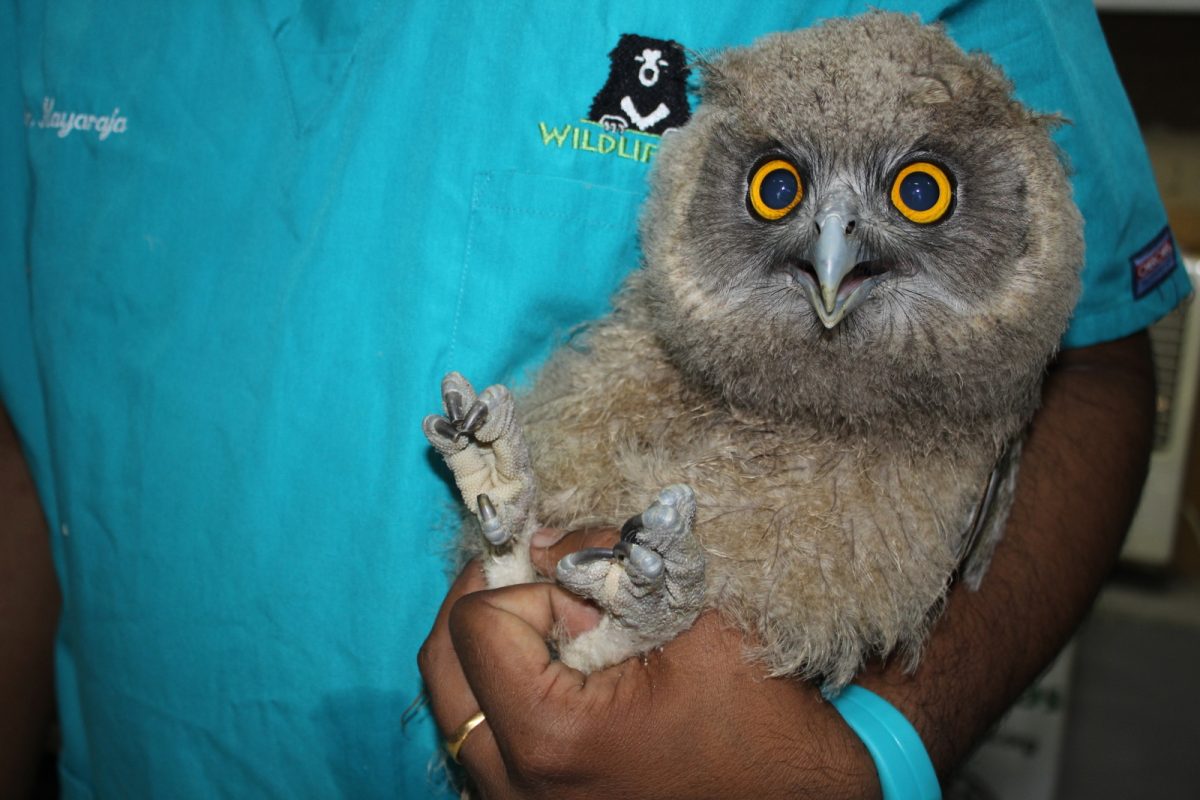
Wildlife SOS engages in conservation efforts leading to protecting and rescuing orphaned, injured, and displaced wildlife found in urban and rural environments across India. In recent years, habitat encroachment and deforestation have been taking place at a startling pace, slowly redefining the boundaries between forest and urban areas. The organisation’s Rapid Response Unit has saved the lives of various wild animals that have been trapped, injured, or caught in such conflict situations.
Established with the mission of promoting wildlife and habitat protection in India over the years, Wildlife SOS has been responsible for rescuing wildlife in distress and working to resolve man-animal conflicts while also taking initiatives to promote and educate the public about the need for conservation and habitat protection.
Wildlife SOS also provides sustainable alternative livelihood to erstwhile poacher communities or those communities that depend on wildlife for sustenance. They study various aspects of biodiversity and conduct extensive in-situ and ex-situ research in veterinary areas, behavioural studies, reproductive physiology, and other fields in collaboration with national and international universities and organisations.
The organisation’s rescue teams work round the clock, attending to distress calls from members of the public, police, animal lovers, and other organizations for wild animals in peril or caught in conflict situations. After being rescued, the animals receive veterinary treatment if required, and are then released back into the wild. Injured or orphaned animals that cannot be released are given refuge at rescue facilities spread across various states.
Over the years, the wildlife rescue and rehabilitation NGO has achieved several victories and carried out many successful rescue operations. Here is a roundup of their top 16 animal rescues!
Mohan, the world’s unluckiest elephant, finally walks free
Having spent nearly 50 years in captivity, begging elephant Mohan finally had a chance to break away from his shackles after Wildlife SOS’s persistent efforts over two years to win him freedom. This has been the most challenging and the biggest of the NGO’s elephant rescues till date! Formerly known as the world’s unluckiest elephant, Mohan has come a long way in the few short months since his much-awaited rescue. It is heart-warming to watch him taking his first steps towards the road to recovery, and enjoying a much-deserved life of freedom along with fellow pachyderms at the Wildlife SOS Elephant Conservation & Care Centre!
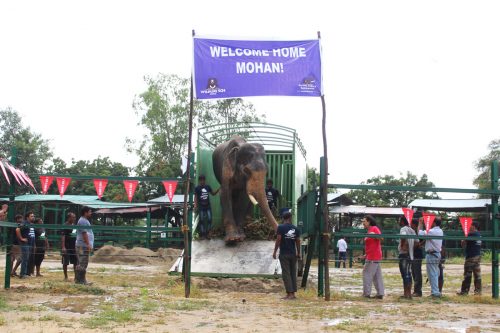
Drowning leopard rescued from 60-feet-deep well in Maharashtra
In a nerve-wracking rescue operation, a four-year-old female leopard was rescued from a remote village in Maharashtra after it had the misfortune of falling into a 60-foot-deep well. The terrified animal was on the verge of drowning and was desperately clinging onto a rope to stay afloat. With the help of the local villagers, the team from Manikdoh Leopard Rescue Center had to lower a wooden platform into the well to give the leopard a chance to clamber out of the water and onto a safe space before lowering a trapping cage inside the well. However, the sight of the cold metal cage aggravated the already petrified big cat and it even took a few swipes at it, only to end up losing its balance, much to everyone’s dismay. After regaining a hold on the platform and realising that the box was its last hope for survival, in a swift movement, the leopard jumped into the cage. Upon close examination, the animal was found to be physically fit, and was later released back into the wild.
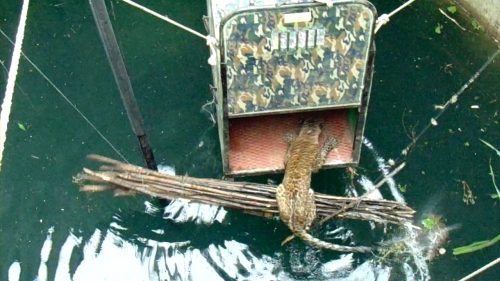
Rose the spirited bear cub
Wildlife SOS saw another major addition to their rescued sloth bears at Agra, at the world’s largest sloth bear rehabilitation centre. The centre currently houses 200 former ‘dancing bears’ that were rescued from Kalandar communities (who were dependent on sloth bears to earn a living).
A brutally maimed and abandoned three-month-old bear cub was found near a village in Bhopal. The young bear had lost her left fore-limb to a poacher’s snare, leaving her severely injured and inevitably handicapped for the rest of her life. Following a series of intensive surgeries to amputate the severed leg and to suture the skin over her exposed leg bone, Rose, as she has been fondly named by the staff, is now on a positive road to recovery at the Agra Bear Rescue Center.

Rhea the circus elephant
In yet another important milestone, the organisation rescued their 11th circus elephant, Rhea. After months of tireless efforts and prolonged paperwork, the 53-year-old pachyderm was finally reunited with her sisters, Mia and Sita, who were rescued from the circus in 2015. Her time in the circus had left Rhea riddled with ailments. Her feet were in atrocious condition, with deep painful cracks running through her swollen soles. Cracked nails and overgrown cuticles were testament to the neglect she had been subjected to all these years. In the days since her rescue, Rhea’s spirit has won the hearts of everyone at the Elephant Conservation & Care Centre in Mathura, and she has finally been receiving the medical attention and rest that she needed.
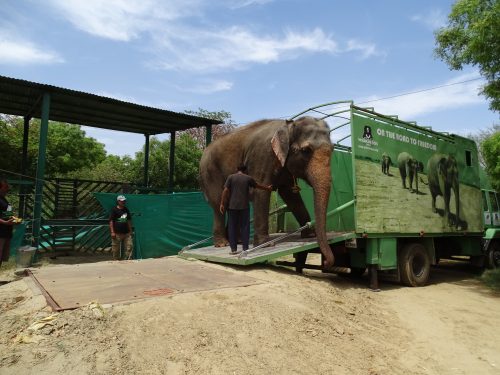
Duck Seizure in Agra
1,839 ducks were rescued in a massive seizure from a livestock transport truck by Agra Police authorities. The ducks were being transported from Karnataka, and were on the way to a slaughter house in Uttar Pradesh. The police patrol intercepted the men driving the vehicle on the outskirts of the city, and upon standard inspection, they found that the truck failed to meet the suitable requirements of vehicles transporting livestock across the country.
The police transferred the traumatized and starving ducks to the Wildlife SOS rescue facility in Peprot, located a few kilometres from Agra. Here, the rescue team set them free from their tiny inhumane cages and released them into a big open field. It was quite a remarkable and heart-warming sight to watch them run about the field enjoying their newfound freedom and relishing the feed that the team prepared for them.

Orphaned deer fawn rescued in forest fire
When a devastating forest fire ravaged Soor Sarovar Bird Sanctuary in Agra, it killed and injured hundreds of birds, reptiles, and animals, along with damaging several hectares of forest. In the aftermath of the horrific incident, the Forest Department found an orphaned hog deer fawn, weak and dehydrated from lack of food and water. There was no sign of the mother, who possibly perished in the fire, leaving her offspring to fend for itself. Lovingly named Soniya, the fawn now safety resides at the Agra Bear Rescue Facility with other rescued deer.
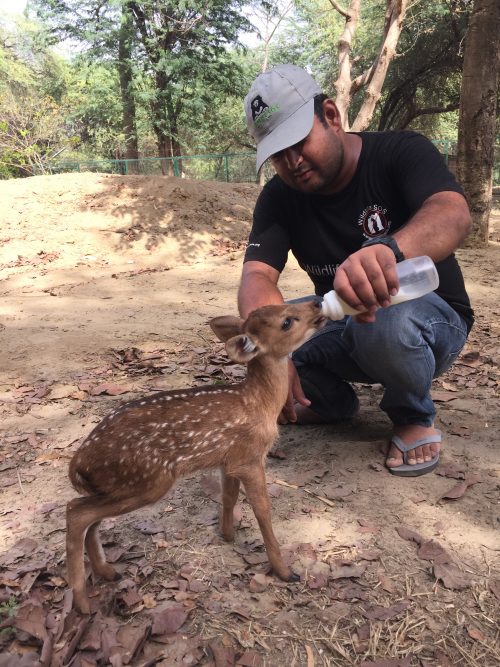
Turtles rescued from poacher’s net
A team found 54 endangered turtles trapped in a 20-ft-long poacher’s net in Keetham Lake, located in Soor Sarovar Bird Sanctuary, Agra. Wildlife SOS and the Uttar Pradesh Forest Department found 42 dead turtles and 12 in grave condition. Rescuers identified them as four different species of turtles—the Spotted Black Turtle, Indian Soft-shell Turtle, Indian Flap-shell Turtle and Indian Tent Turtle, all protected under the Indian Wildlife Protection Act, 1972. The authorities immediately released the 12 rescued turtles back into the lake.
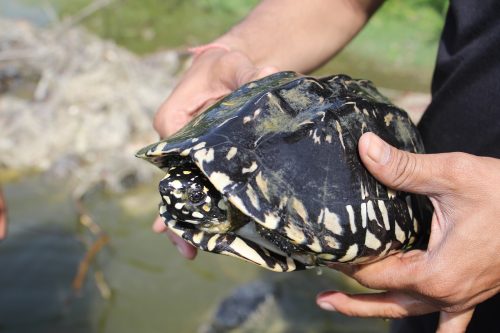
Nilgai creates panic near the Parliament
After wandering out the of the central ridge forest in Delhi, an adult female nilgai found itself in Rajpath, which houses the Parliament House and top government offices in New Delhi. The Wildlife SOS team used a safety net to rescue the distressed antelope in a five-hour-long operation. Following a general health assessment, the rescue team released the nilgai to its natural habitat.

Himalayan Griffon Vulture
The Wildlife SOS rescue team in Srinagar rescued an injured Himalayan Griffon Vulture from Dal Lake. The Griffon Vulture is one of the largest birds in the Himalayan region and being a scavenging bird of prey, it mostly feeds on the carcasses of animals. This particular bird’s wingspan measured about 8 ft. long, and it was around 3 ft. tall. The team gave the bird the necessary treatment and soon released it into the wild.
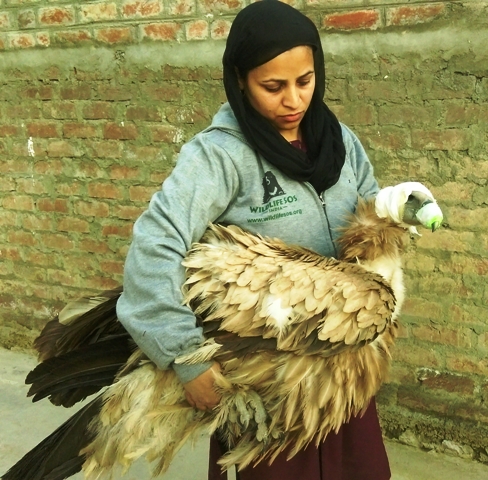
Hyena violently attacked by a mob
In one of the most brutal acts against an innocent animal, a mob of villagers violently attacked a female hyena after they found it wandering on the outskirts of Sarbathpur village, Agra. The forest department and Wildlife SOS team were able to rescue the critically injured animal in the nick of time. It had sustained multiple body wounds, and suffered temporary loss of vision due to severe head trauma. After undergoing months of treatment and care, the hyena finally recovered enough to return to the wild.
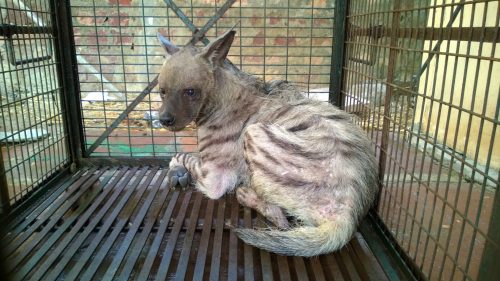
Leopard rescued from a house
A four-year-old male leopard spread panic in a residential area in Agra after it took up shelter inside a house. In order to locate the animal and assess the situation, the rescue team had to drill a hole in the wall through which a Wildlife SOS veterinarian used a tranquilising gun to sedate the wild animal. The wild cat had sustained minor injuries on its forehead during the ordeal. The team released the animal back into its natural habitat once it recovered from its injuries.

Dusky Eagle Owl
A rescue team seized a juvenile dusky eagle owl from poachers in Agra. The poachers had trimmed off the owl’s talons as they were planning on illegally trading them in the market. Driven by religious myths and superstitious beliefs, people poach owls for their body parts such as talons, skulls, bones, feathers, meat, and blood, which they then use in talismans, black magic, traditional medicines, etc. After months of treatment, the team ascertained the owl could hunt, and released it back into the wild.
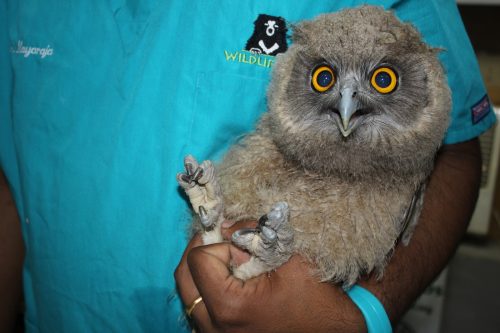
Reptile seizure
A Wildlife SOS team rescued 18 monitor lizards and 16 flap shell turtles from poachers at a train station. The poachers were smuggling the reptiles from Alwar, Rajasthan to sell them to potential buyers in Delhi. The poachers had tied the lizards’ claws to their backs, and the rescue team had to cut open the ropes. The team released the turtles in Keetham Lake in Sur Sarovar Bird Sanctuary, and the monitor lizards into the jungle.
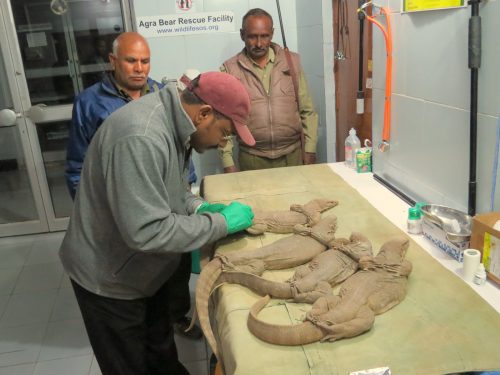
Leopard in 30-foot-deep well
Farmers from Savidhane village in Maharashtra found a five-year-old female leopard trapped in a 30-ft-deep well. The terrified animal was struggling to avoid the water, and the team rescued it in a nail-biting operation. Deemed fit by the veterinarians, they released the leopard into the neighbouring forest shortly after. Uncovered water tanks and open wells trap wildlife, particularly small jungle cats, civets, leopards, and other nocturnal animals. The villagers often fail to place proper net covers which allows the well to trap unsuspecting animals, and sometimes humans. For public safety and the welfare of wildlife, people must prevent such incidents from taking place in the future.
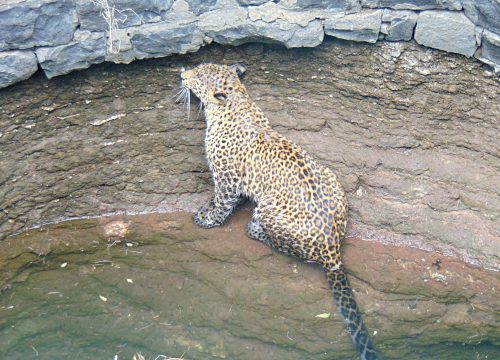
Barn Owl chicks
Villagers found eight Barn Owl fledglings inside a well in Sanaura village, Farah, Mathura. The nearly 30-foot-deep well was dry, making it a suitable nesting spot for birds such as owls. However, after days of waiting, when the mother failed to return to her nest, a concerned resident called for help. Since the fledglings were still quite young, they were incapable of eating and surviving on their own. They thus required hand-rearing. The team will reintroduce them to their natural habitat once they have matured to a suitable age.
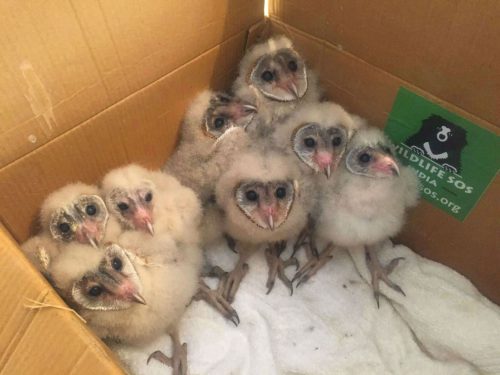
Sloth bear trapped in poacher’s snare
The Wildlife SOS team cut a female sloth bear free from a snare outside Koratagere village in Karnataka. The snare consisted of a modified clutch wire reinforced with a fence wire, and had enveloped the large animal’s waist. In its attempt to break free, the bear struggled for hours, causing the metal wire to tighten around its waist. Luckily, the animal sustained only minor injuries, and was able to return to the forest soon after its rescue.
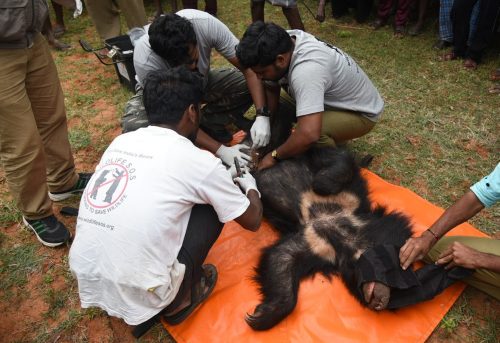
Wildlife SOS works with rural and urban communities to spread awareness about the plight of wildlife in India. It also tries to evoke a sense of compassion within the local communities, especially among the young generations. This gives them a more sensitized understanding of the environment and inspires people to actively protect our natural heritage.
Help Wildlife SOS rescue animals as a volunteer. Find out more here.
Like this story? Or have something to share? Write to us: [email protected], or connect with us on Facebook and Twitter.
NEW: Click here to get positive news on WhatsApp!
If you found our stories insightful, informative, or even just enjoyable, we invite you to consider making a voluntary payment to support the work we do at The Better India. Your contribution helps us continue producing quality content that educates, inspires, and drives positive change.
Choose one of the payment options below for your contribution-
By paying for the stories you value, you directly contribute to sustaining our efforts focused on making a difference in the world. Together, let's ensure that impactful stories continue to be told and shared, enriching lives and communities alike.
Thank you for your support. Here are some frequently asked questions you might find helpful to know why you are contributing?


This story made me
-
97
-
121
-
89
-
167




